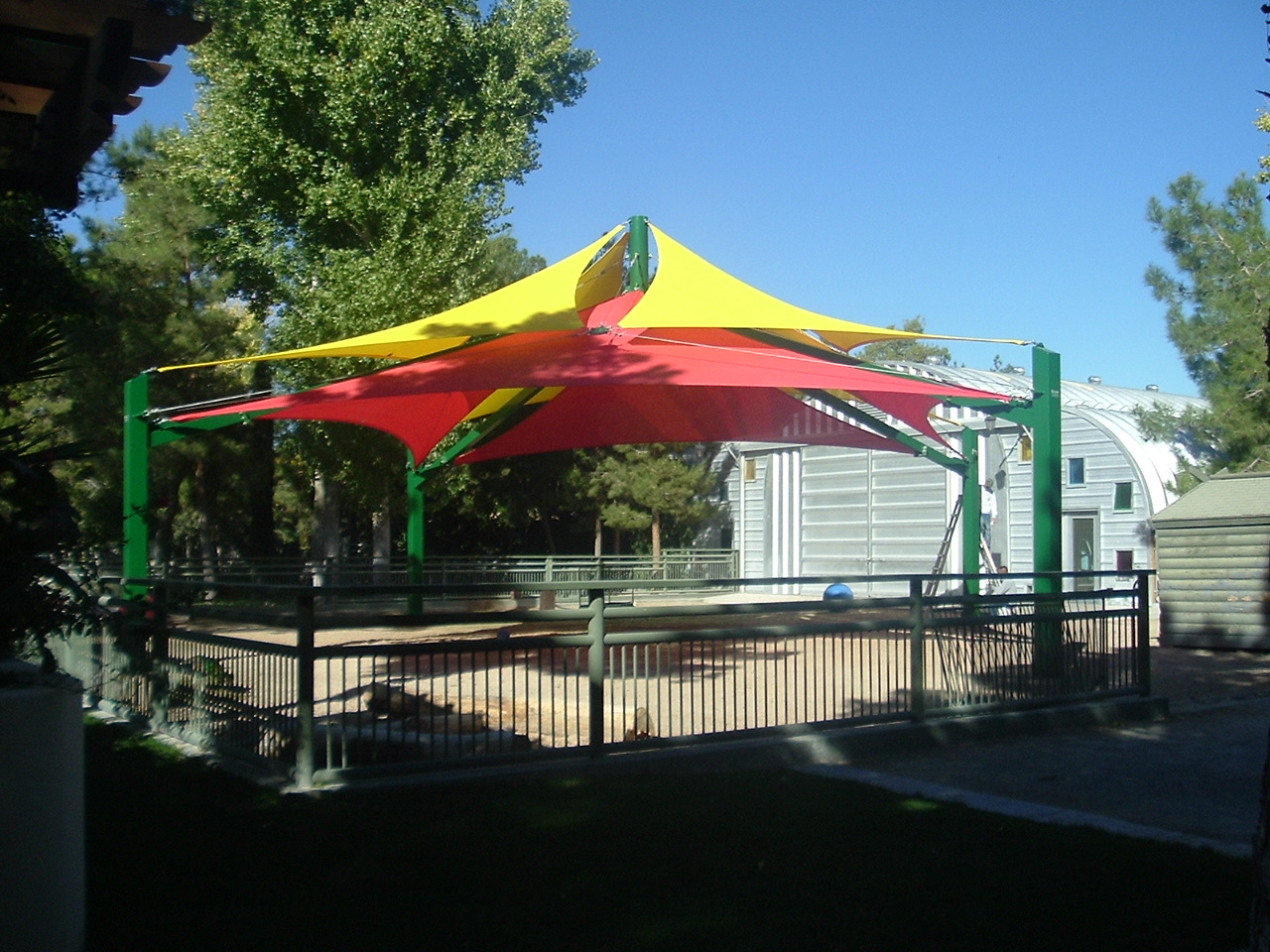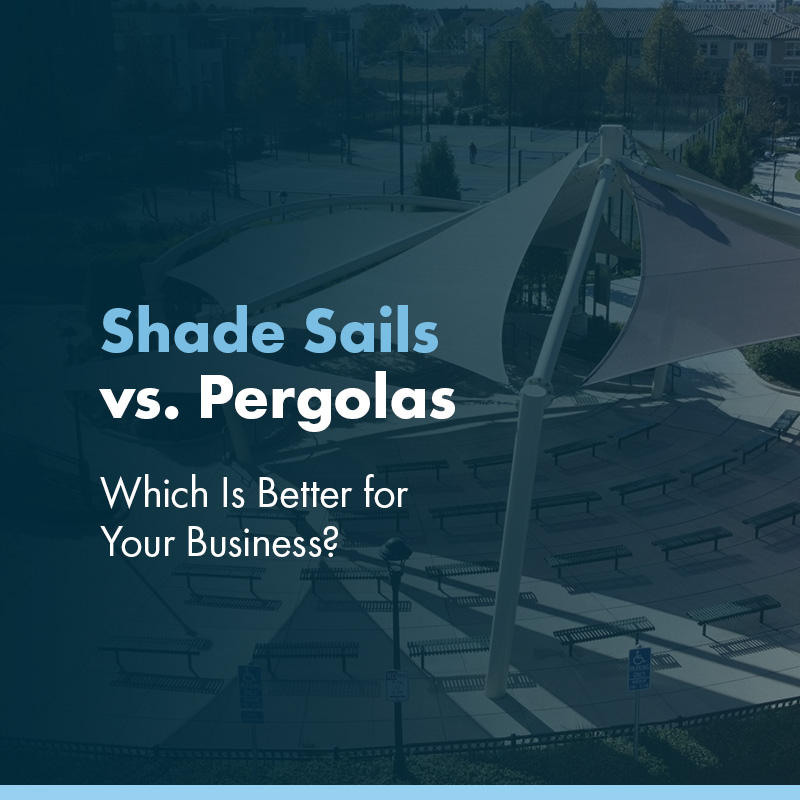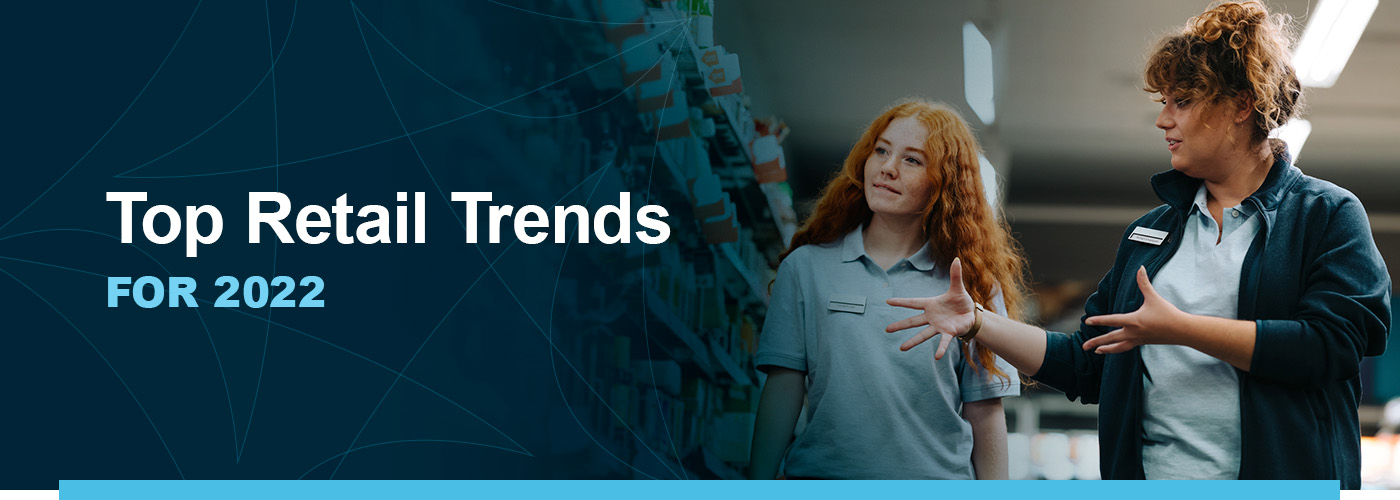
The retail industry is always evolving to meet the demands of shoppers. Stores are constantly looking for new and exciting ways to share the right products when and where consumers want them.
Retail now has to consider both e-commerce and in-person sales while carefully choosing business practices that lure in new customers and inspire existing ones to keep coming back. Understanding these retail trends in 2022 can help your commercial retailer gain an edge over the competition and boost sales.
Learn more about the importance of tackling new trends and things retailers are doing this year to differentiate their stores and accommodate their shoppers.
How Retail Trends Have Changed
Retail trends are always evolving thanks to modern-day technology and consumer demand. Here are some of the ways retail trends have changed over the last few years.
Shoppers Are More Knowledgeable
Years ago, consumers came to stores hoping a salesperson could help them and offer advice on what products were available and what to buy. Today, shoppers are stepping into retailers having already researched the items they are interested in buying.
Researching before and while shopping lets customers learn everything they need to know and compare their options. Shoppers are concerned with getting the best value for their money. They are willing to do the work to figure out where the best deals and places to buy are.
Retailers now have the opportunity to lead customers through the buyer’s journey from the digital world to an in-person sale. This is especially true of shoppers looking for big-ticket items. They want to experience quality and get a feel for the item before they hand over their hard-earned money for it.
Retailers have to capitalize off that brick-and-mortar experience to encourage shoppers to keep coming back in person and not opt for the convenience of e-commerce.
Retailers Depend on Local Search Queries
Brick-and-mortar stores used to rely on having a listing in a local business directory for shoppers to find their information. Now, retailers can manage their own listings through Google and other search engines.
Shoppers use local search queries to help them find retailers with the products and services they are seeking. Local search queries refer to the search engine results that pop up when a person is looking for a store in their geographic region.
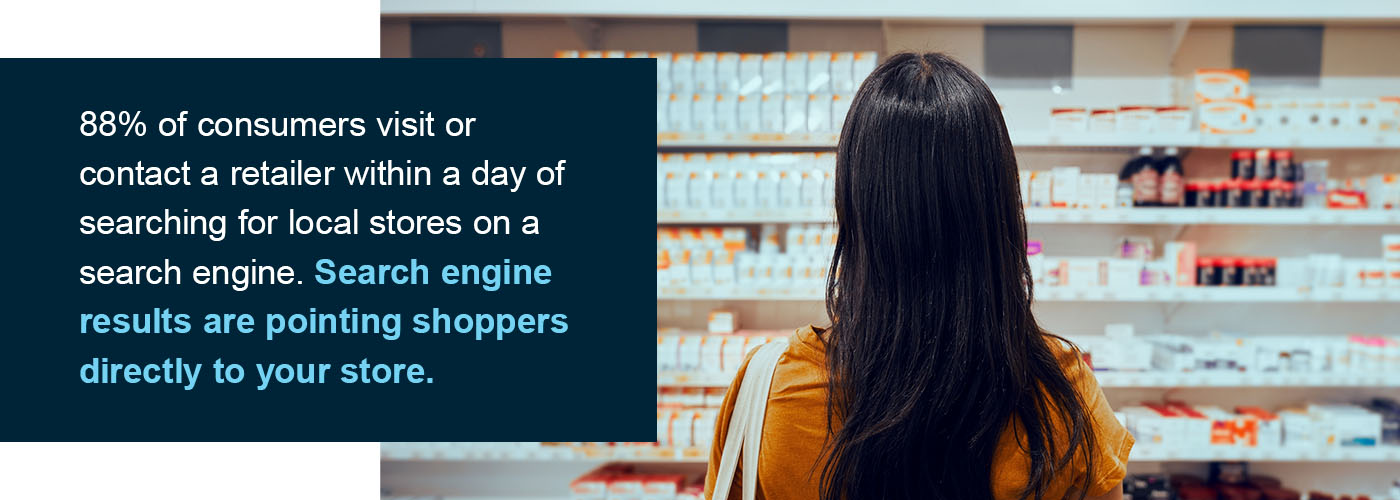
Today, consumers expect retailers to have accurate and timely information on the web. They want to find your business’s operating hours and address. It is incredibly important for retail stores to have their information available on search results.
In fact, 88% of consumers visit or contact a retailer within a day of searching for local stores on a search engine. Search engine results are pointing shoppers directly to your store.
Consumers Count on Delivery and Pickup Services
Before the pandemic, shoppers depended on in-person shopping and delivery to buy a new product. Some stores also offered in-store pickup, but not to the capacity and frequency of today’s retailers. With so much change in the world and shifting consumer priorities, retailers had to accommodate their customers to compete with other stores.
Now, shoppers value having options. They want to choose how to receive their goods. Many brick-and-mortar locations now offer various styles of in-store pickup to make the consumer’s life easier and suit their needs. Shoppers today can utilize options like:
- Delivery: Shoppers can order online and have their products delivered straight to their homes.
- Ship-to-store delivery: Some stores allow customers to order items and have them shipped and delivered to the retailer for pickup.
- In-store pickup: Consumers can place an order from a store’s available inventory and pick it up from the store, usually at guest services.
- Curbside pickup: Similar to in-store pickup, curbside pickup allows customers to place an order and get the products at the store within a few hours. In many cases, shoppers don’t even have to get out of their vehicles, and retail workers bring the purchases straight to the curbside pickup zone.
Industry Lines Are Blurring
In recent years, the retail world has undergone a major transformation. Business functions and industries have started blending together, creating innovative retailers that have changed the game.
For example, restaurants typically sell meals that are prepared and served to customers. Some businesses have chosen to blur the line between retailer and restaurant and have started selling select grocery items in their locations.
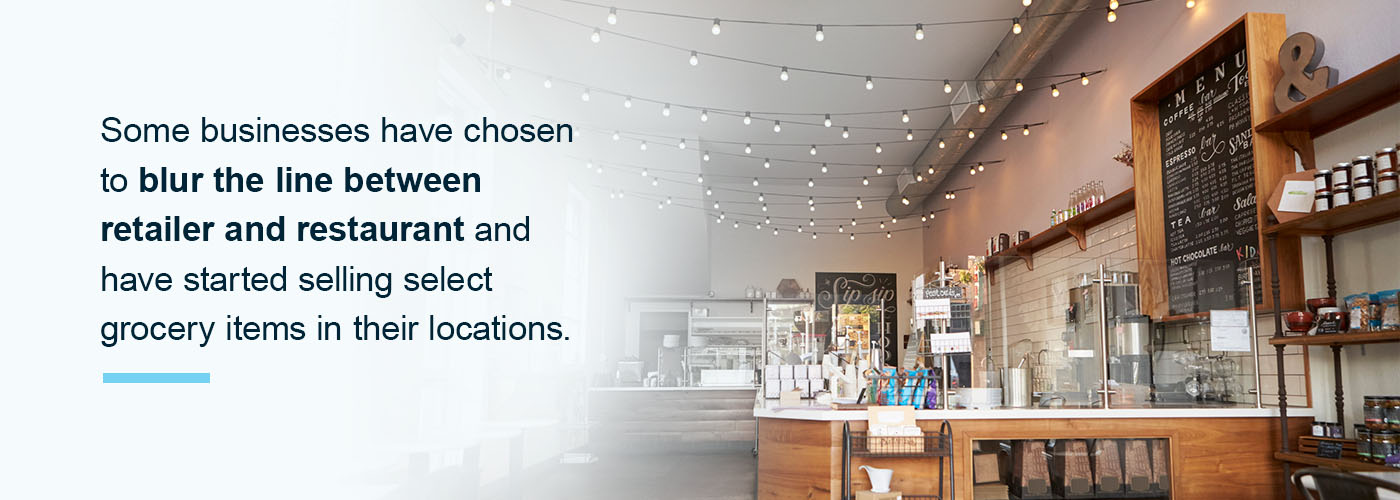
Hybrid industries attract new markets and offer new customer experiences. Retail industry disruptors are utilizing new technologies to improve and revolutionize their overall customer experience.
Businesses want to offer more to shoppers and give themselves a competitive edge. Differentiation is incredibly important in an increasingly digital world where brick-and-mortar retailers have to work even harder to attract new customers.
Retailers Have Access to Better Technology
Thanks to the Internet of Things (IoT) and automation, modern retailers have access to better technology these days. Shoppers used to enter a store without knowing what would be in stock. Today, many businesses have their store’s available inventory integrated into their website or app so shoppers can see what is in the store before they visit.
Retailers have a better understanding of supply chain and inventory management. Using sensors and software, stores can track how their inventory moves and what items are selling really well. They can analyze this data and make more informed buying decisions.
This technology can also help stores to better manage their supply chain and ensure they have appropriate warehouse management systems in place.
7 Top Retail Trends to Keep on Your Radar
The retail industry is always evolving to better suit shoppers and give stores an edge. New and exciting changes have transformed the way people shop both in person and online. Here are the top retail trends to keep a close eye on in 2022:
1. Retail Will Grow as an Omnichannel Experience
An omnichannel retail experience refers to a brand’s interconnectedness between all of its channels. This allows shoppers to seamlessly access a retailer’s products and enjoy a consistent experience from whatever medium they choose.
Omnichannel retail is important because e-commerce accounts for approximately 17% of retail sales. This crossover of consumers between on- and offline means stores need to be present wherever shoppers are when they feel inspired to buy a product. Offering a seamless consumer experience across channels gives retailers an edge.
Plus, omnichannel retail makes it easier to share in-store inventory online so shoppers can see what’s available before visiting a retail store. Consumers can conveniently choose how they wish to purchase products, whether they want to order online or go shopping in person. Shoppers who are already in stores can look up what they need on a retailer’s site or app to see whether it’s in stock and even find what aisle it’s in.
2. Delivery and Pickup Options Are Here to Stay
There has been a major influx in demand for delivery and pickup options for consumers. This is due to several reasons, including:
- Health and safety: Retailers must prioritize cleanliness to ensure shoppers feel safe coming to their store. People are looking for less physical contact and more space to shop with peace of mind.
- Convenience: Consumers are busy and want options when they shop. Having delivery and pickup services accommodates more customers and invites new markets to do business with your store.
- New technology: Advancing tech allows retailers to efficiently conduct delivery and pickup operations with real-time communication and support.
- Profitability: Curbside pickup boosts profitability because it does not require a third-party business to deliver shopper purchases.
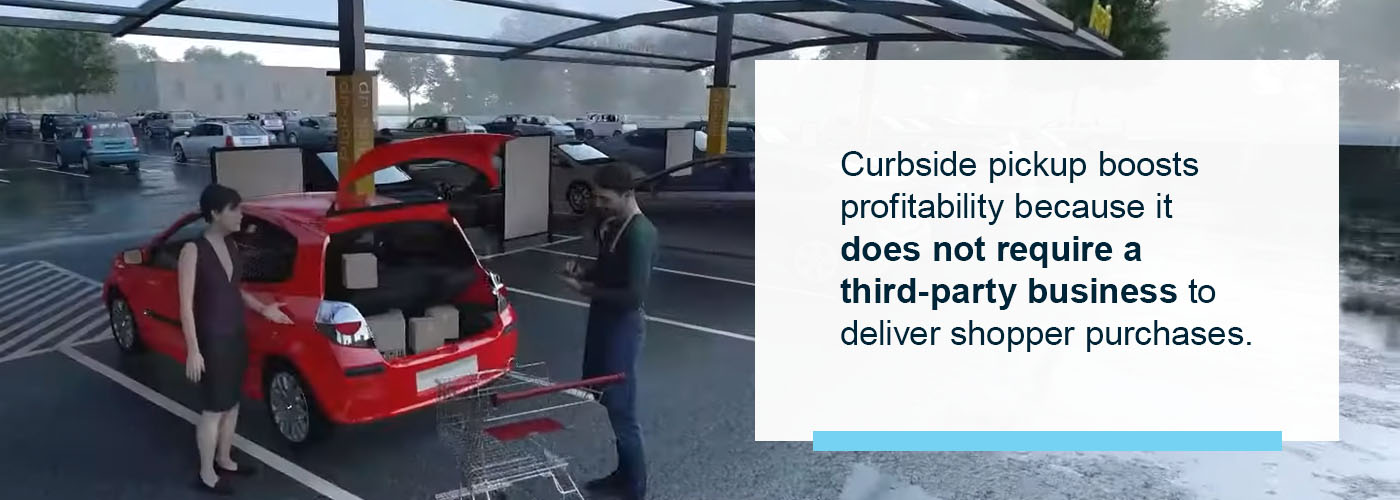
Stores are taking this trend a step further and enhancing curbside pickup experiences with improvements like shade structures and GPS tracking so workers know exactly when a driver arrives at the pickup zone.
3. Artificial Intelligence and Real-Time Inventory Management Use Are Rising
Retail stores are using artificial intelligence (AI) to optimize their operations and automate time-consuming tasks. AI paired with real-time inventory management allows businesses to boost demand forecasting efforts and improve supply chain management.
Digital shopping allows retailers to track how consumers behave and interact with their products. This allows for efforts like retargeting to recapture consumer attention and drive sales. Now, consumers are seeking personalized retail experiences like what they encounter online.
Businesses can use the data from AI and inventory management systems to create more meaningful customer interactions in person. Retailers innovate customer experiences using this information and integrating online with in-person interactions.
Data allows retail stores to improve inventory management and, therefore, boost customer experiences because shoppers will be able to find the products they want both online and in-store.
4. Modern Software Will Supercharge Supply Chain Management
Technology has made it possible for retailers to take control of their supply chain and revolutionize the movement of their products, and that improvement is here to stay.
Innovations in management and transparency help businesses combat the supply chain stress that leaves consumers feeling frustrated. Avoiding stock-outs and delays helps keep products on shelves and, therefore, available to shoppers.
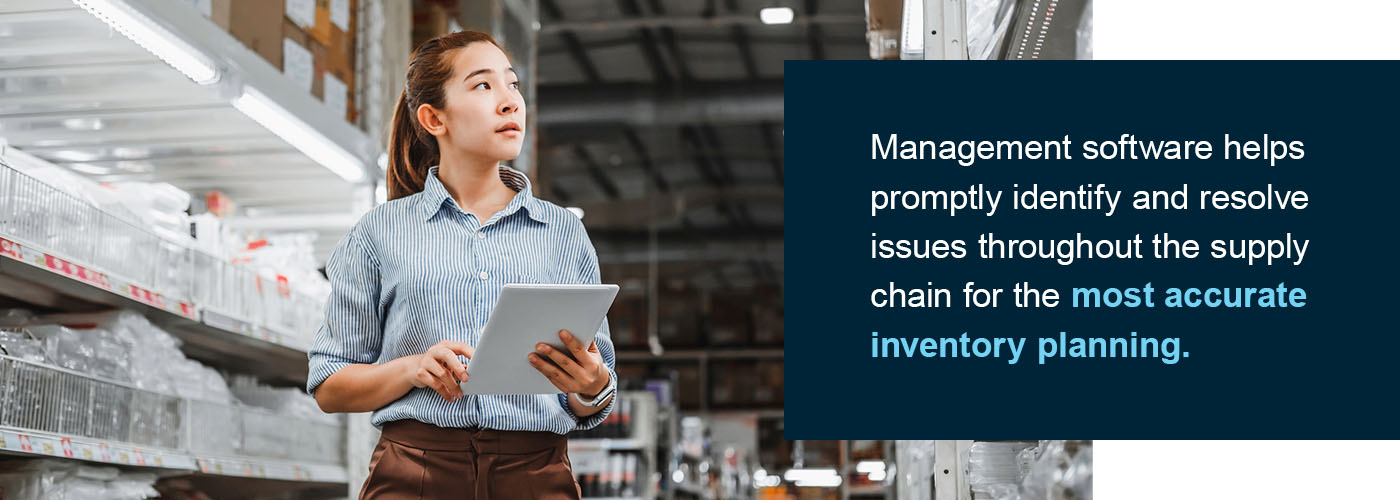
Retail stores can use modern tech to supercharge their supply chain management with software that collects massive amounts of data and shares real-time insights. Advancements in supply chain management and transparency have improved processes like:
- Planning: Retail businesses need access to customer data to make informed buying decisions. Management software helps promptly identify and resolve issues throughout the supply chain for the most accurate inventory planning.
- Logistics and distribution: From forecasting to creating shipment routes, technology has made it possible to prioritize optimization of every distribution channel. This makes shipping and delivery more streamlined and efficient.
- Production: AI and data-collecting technologies improve production planning and scheduling because of the accuracy automated product stocks and forecasting.
5. Social Selling Continues to Integrate With E-Commerce Efforts
Retail businesses are always looking for ways to gain visibility to the consumer. They often look to take advantage of where their target market’s attention is, which is often social media.
In recent years, e-commerce has evolved to include selling on social media channels. This offers shoppers a convenient way to find new products and make purchases when they feel inspired to do so.
Retailers want to make it as easy as possible for consumers to buy goods at every point of contact with the brand. Today, 36% of shoppers are using social media to help them inform their decision-making and to make the actual purchase. That means people are buying goods directly from social platforms with the click of a button.
6. Shoppers Will Keep Relying on the Web
Beyond online shopping and e-commerce, consumers use the web to find retail stores. Being discoverable on the internet through social media and websites while also being present on search engine results is key.
It’s very valuable for businesses to appear in local search results with updated information like:
- Business address
- Operating hours
- Link to website
- Phone number
- Reviews
- Photos
Consumers use the information they collect from search results to make decisions about where to shop. A retailer’s online presence can align with its branding and complement its physical stores to draw in new customers. And accurate information helps build trust with searchers, who can then become shoppers.
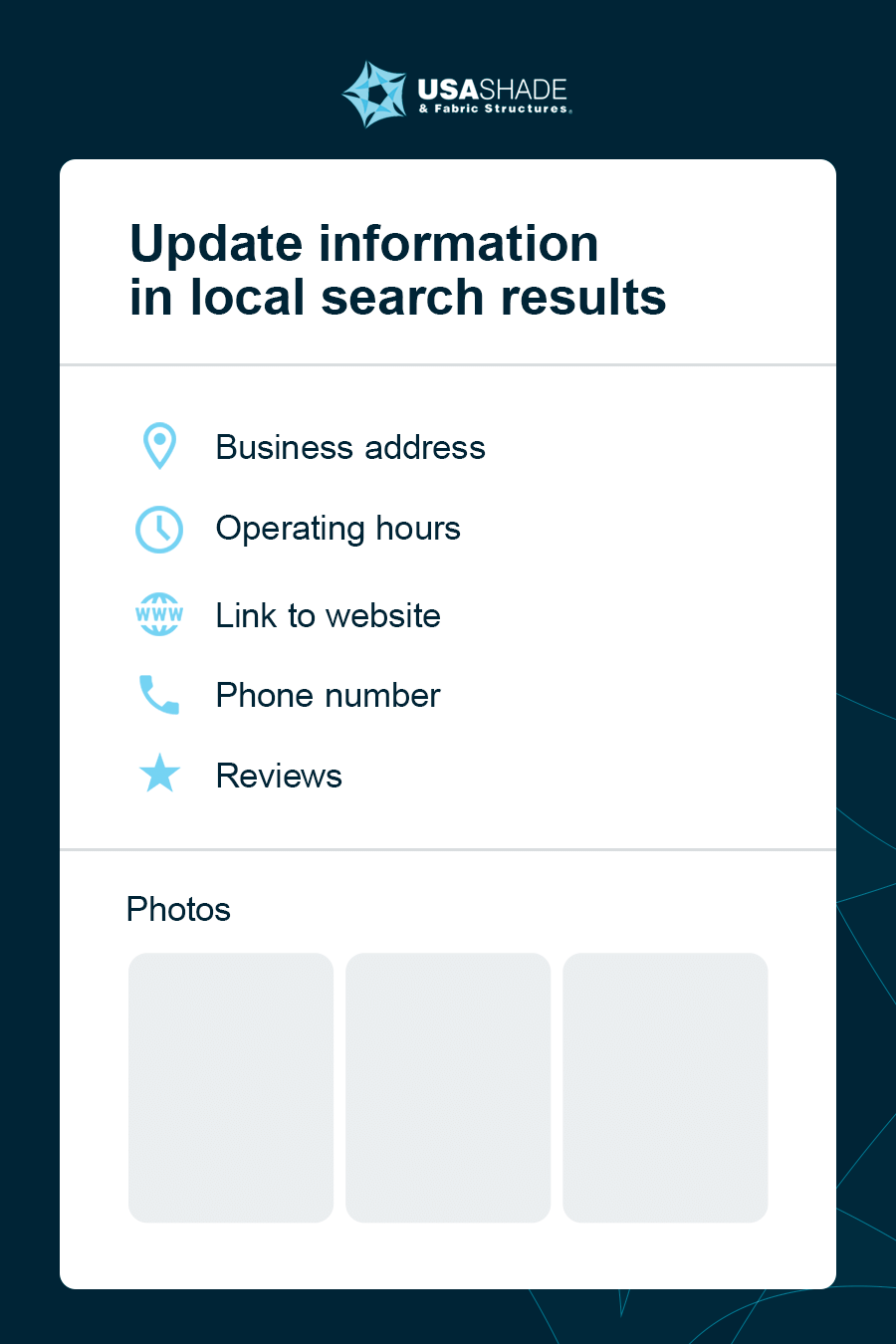
7. Stores Continue to Rethink Ways of Keeping Customers Safe
As the world adjusts to new normals, retailers are rethinking their design and operations. Many stores are reworking their spaces to allow for greater distances between shoppers. They are swapping current technology for contactless payment methods and self-checkout zones.
Many retailers have begun utilizing curbside pickup and other processes to make customers feel secure and have peace of mind while interacting with their store.
The Value of Keeping up With Retail Trends
Businesses can enjoy many benefits when they make an effort to better understand the ever-changing nature of the retail industry. The following are some of the core reasons why it is valuable to keep up with retail trends.
Attracting and Retaining Customers
Perhaps the greatest advantage of following retail trends is attracting both new and returning customers. Retailers want shoppers to come back to their stores time and time again. They can do this by tailoring their operations to what’s new and working for businesses in the retail industry.
Shoppers are always seeking innovative experiences, especially when spending their hard-earned money. Stores have to continuously deliver new and exciting ideas to their consumers because there is so much competition in the retail space.
Taking on new trends is great for drawing in new crowds. Shoppers are still seeking in-person interactions and want to bounce purchase decisions off other people. Retailers can utilize the power of human interaction by encouraging workers to prioritize consumer experience. For instance, your business might encourage employees to research big-ticket items it sells and be as knowledgeable as shoppers.
When stores keep up with the times, it sparks curiosity and interest in shoppers that is necessary to get them inside the door.
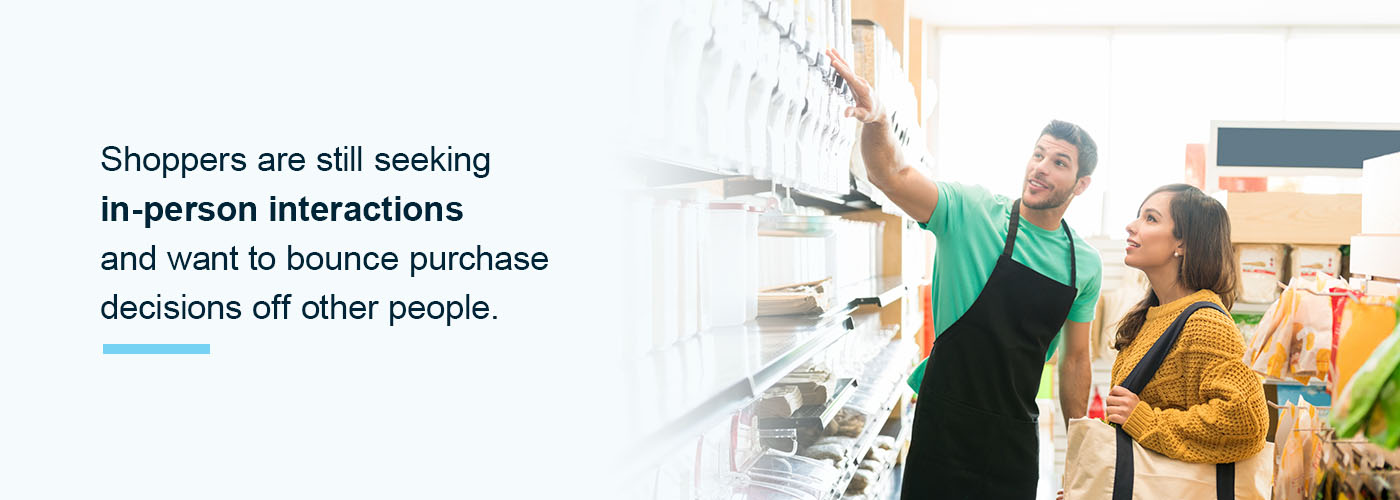
Making Smarter Business Decisions
By analyzing retail shopping trends in 2022, retailers can more easily identify the parts of their business that are working well and those that are not performing as successfully.
Instead of blindly following trends, it is crucial that retail businesses implement new services and products carefully and in a controlled manner. This way they can use the consumer response to pivot operations and better inform their decision making.
Trends can shape the future of a retail business and guide consumer behavior. Staying on top of what’s new and working well in the retail space is beneficial for any business looking to give customers what they want.
Offering Better Products and Services
Participating in trends allows retailers to develop and offer better products for their customers. By acknowledging new movements and innovations, businesses can continuously learn more about their target markets.
Monitoring shopping trends and consumer behavior allows retailers to get to know their customers’ interests and preferences. Using this knowledge, stores can offer solutions to customer pain points and offer a better overall experience with their brand.
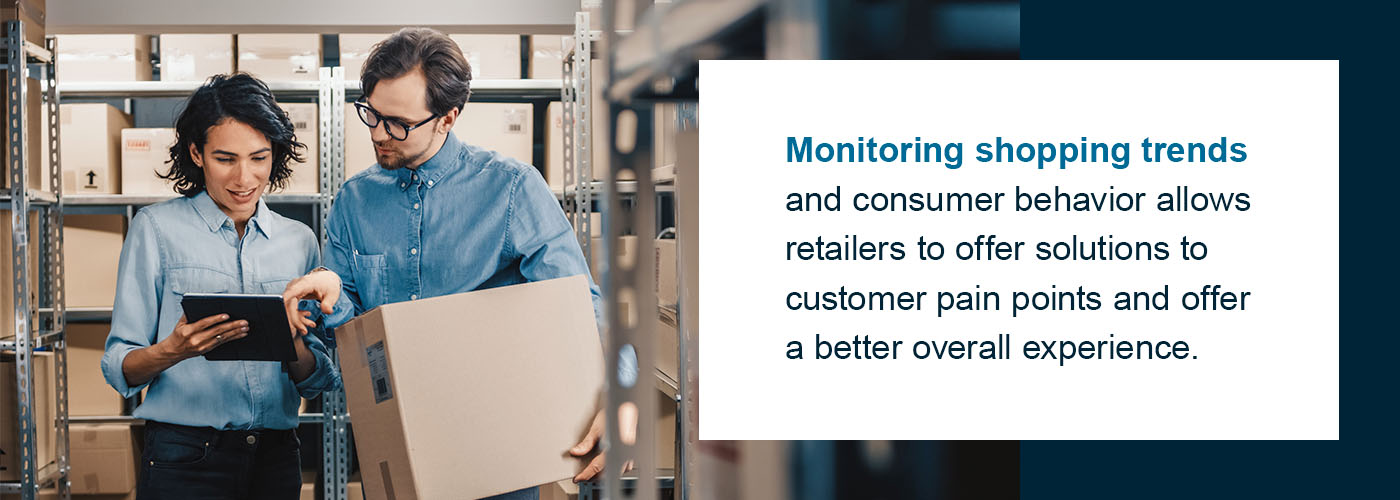
Trends give way to exciting new tools and processes that make retail operations more efficient and cutting edge. The more a store can step up to the new ways of retail, the more they can offer their customers.
Maintaining Physical Stores
If retailers want to continue operating with physical stores, they can evolve their operations and conquer new trends. While it’s projected that by 2026, around 80,000 retail stores will go out of business, it’s possible to overcome that statistic.
Retailers who want to defy the decline of physical stores can create experiences that draw in new and returning customers. They have to shift the way they operate and fight to keep their doors open.
If a business wants to maintain its physical stores in an increasingly digital world, it can find new ways to differentiate its spaces and continuously renew consumer interest in its brand.
Capitalizing on Mobile
Paying close attention to changes in the retail industry and shopping trends can help keep businesses afloat. Retailers can create an inviting online presence to see a higher return on investment (ROI). From there, they can rely on word-of-mouth marketing through posts shares, gain valuable positive reviews and introduce their brands to new customers.
Keeping up with digital trends allows businesses access to information they would have otherwise never had. They can use the data they gather from online channels to create better customer experiences in person.
Following trends can help a business capitalize on the value of mobile and the data regarding online shopper behavior.
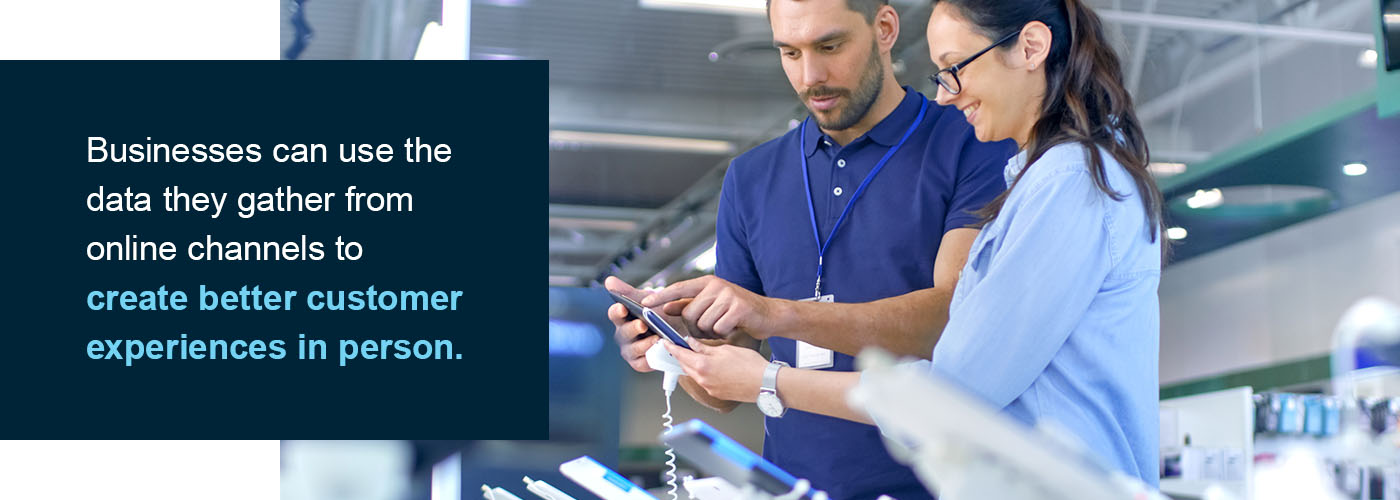
Upgrading Your Marketing
Trends inform nearly every aspect of marketing. Businesses use the insights they gain from trend monitoring to develop meaningful and innovative marketing strategies. Retailers can use their marketing efforts to drive consumers to online and offline sales channels.
Consumers are very savvy these days and expect brand marketing to show them how a product can improve their lives. They can tell when marketing is outdated and pushy. Businesses can gauge how to better interact with their target audiences through their marketing efforts to get the most out of their campaigns and learn how to best engage with consumers using insights from new trends.
Gaining a Competitive Edge
One of the most powerful advantages of keeping up with retail trends is gaining an edge over the competition. Stores can win over consumers by paying close attention to changes in the industry and molding their operations to offer better experiences for their shoppers.
Retail competition is continuously getting more fierce. To outshine other stores, retailers have to stay on the pulse and use new technology to gain an edge however they can. Trends help businesses to better understand who consumers are and what they want most.
Successful companies do not happen by accident. They must outdo the competition and solve problems for consumers better than other businesses. The most prosperous brands are so in tune with trends they become trendsetters. This helps propel them ahead of the competition and sets them apart in the minds of consumers.
Trust USA SHADE With Your Business’s Shade Structure Needs
It’s beneficial for retailers to stay informed on the latest industry trends. Introducing a commercial shade structure or shade sails to your storefront can transform curbside pickup operations, enhance outdoor areas and put your business ahead of the competition.
For more than three decades, USA SHADE has been North America’s leader in shade structures for commercial businesses. We take care of everything, from design to installation, to offer the most innovative solution for your business.
Interested in learning about shade structures and cantilevers from USA SHADE for your retail store? Contact us today!


